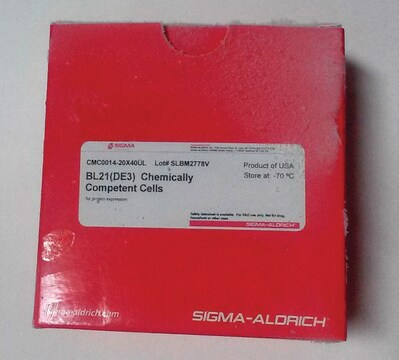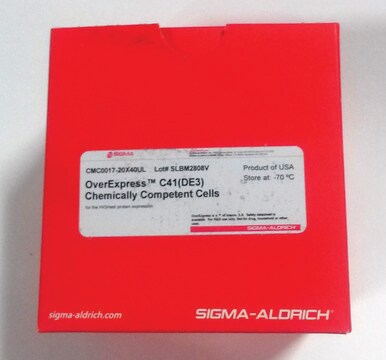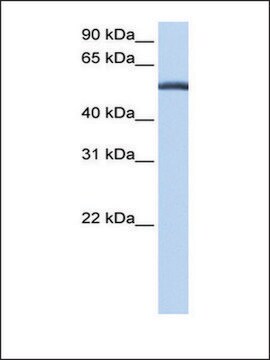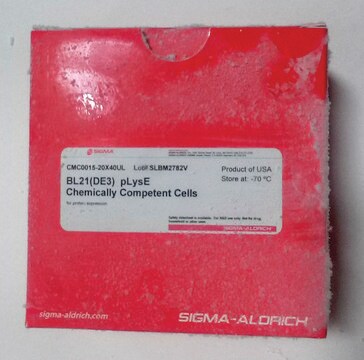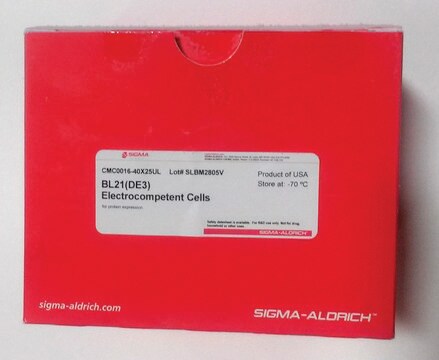CMC0014
BL21(DE3) Chemically Competent Cells
Escherichia coli, rod shaped
Sinónimos:
Competent E. coli cells
About This Item
Productos recomendados
Nombre del producto
BL21(DE3) Chemically Competent Cells, for protein expression
biological source
Escherichia coli
grade
Molecular Biology
for molecular biology
growth mode
adherent or suspension
morphology
rod shaped
technique(s)
microbiological culture: suitable
cell transformation
competent cell type: chemically competent
transformation efficiency: ≥1 x 107 cfu/μg
shipped in
dry ice
storage temp.
−70°C
General description
Genotype
F – ompT hsdSB (rB- mB-) gal dcm (DE3)
Application
- to express tau 2N4R isoform (aa1–441) and the truncated tau (aa1–421) using pET19b as expression vector.
- BL21(DE3)Chemically Competent Cells has been used for the transformation and expressionof protegrin-1 (PG1) peptides.
- to express 6His-TEVsite-Hs ARF1 (17-181)-Q71L in pHis2 vector.
Features and Benefits
- a transformation efficiency of >1 × 107 cfu/μg.
- economical prices
- offering superior value for everyday protein expression work.
Components
- BL21(DE3) chemically competent cells
- pUC 19 transformation control DNA
- recovery medium for expression
Related product
Storage Class
10 - Combustible liquids
Elija entre una de las versiones más recientes:
¿Ya tiene este producto?
Encuentre la documentación para los productos que ha comprado recientemente en la Biblioteca de documentos.
Los clientes también vieron
Artículos
Bacterial transformation is a process of horizontal gene transfer by which some bacteria take up foreign genetic material (naked DNA) from the environment. Bacteria that can take up free, extracellular genetic material are known as competent cells.
Contenido relacionado
BL21 Chemically Competent Cells are provided in aliquots of 80 μL sufficient for two transformation reactions of 40 μL each. Transformation is performed by heat shock at 42 °C, followed by incubation on ice.
Global Trade Item Number
| Número de referencia del producto (SKU) | GTIN |
|---|---|
| CMC0014-40X40UL | 4061833532430 |
| CMC0014-20X160UL | 4061838042408 |
| CMC0014-20X40UL | 4061838353511 |
| CMC0014-20X80UL | 4061838042415 |
| CMC0014-4X40UL | 4061838353528 |
Nuestro equipo de científicos tiene experiencia en todas las áreas de investigación: Ciencias de la vida, Ciencia de los materiales, Síntesis química, Cromatografía, Analítica y muchas otras.
Póngase en contacto con el Servicio técnico
